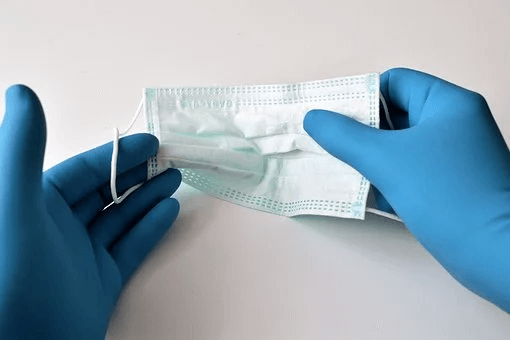How To Measure Temperature Accurately With A Thermometer
Whether you keep a thermometer at home to monitor the temperatures of family members, or use one at your place of business to check the temperatures of employees and visitors, its correct use is essential if it is to provide accurate measurements. In this post, we discuss how to measure temperature accurately with a thermometer. We also discuss precautions you should take when measuring temperature using various types of thermometer.
In general, there are three types of readily available thermometer that you can use to accurately measure the temperature of a patient. Mercury or alcohol in glass thermometers use the thermal expansion of mercury or ethanol to measure oral, armpit or rectal body temperature. Standard electronic or digital thermometers (like the Tendertykes Digital Pacifier or DT-01B thermometer) measure temperature using a thermistor that varies its resistance according to the ambient temperature. Finally, infrared thermometers (like the IRT1603) measure the infrared radiation emitted from the forehead or eardrum and use this measurement to infer body temperature.
General Guidelines For Accurate Temperature measurement
Before using your thermometer, be sure to familiarize yourself with its operation and maintenance. Read the accompanying manual carefully, and ask your healthcare advisor for clarification of anything mentioned in the manual that is not clear. In addition, avoid any activities that may cause your body temperature to be unusually high or low when you measure the temperature. This would include, for example, drinking extremely hot or cold beverages before taking the temperature orally.
To measure temperature accurately and compare different thermometer readings, you should also take the measurement around the same time each day. In addition, use the same temperature measurement method each time (e.g. oral, armpit, etc.). This will be valuable if you need to compare the readings you take on different days and monitor the trend in readings.
We have made a few general points on how to accurately and effectively measure temperature using a thermometer. Below, we will now discuss the procedures specific to each thermometer type that you should follow for accurate and effective measurement.
Accurate Temperature Measurement Using A Mercury or Ethanol Thermometer
Where mercury or ethanol in glass thermometers are concerned, we would advise against the use of mercury based thermometers whenever possible. Mercury as an element poses a serious threat both to your health and the environment. If you do choose to use a thermometer of this type, we would strongly suggest that you use the ethanol based design. The key points to follow to ensure an accurate temperature measurement are:

- To accurately measure temperature, remember to reset the thermometer level by shaking the ethanol level down below the 35ºC mark before each use.
- These thermometers can be used for ether oral or rectal temperature measurements. It is important to realize that the tips of these two types of thermometers are different in shape. Oral thermometer tips are longer and more slender in shape whilst rectal thermometer tips are round. For sanitary reasons, these differences should always be remembered and the thermometer types should not be cross used.
Temperature Measurement Using A Standard Digital Thermometer
You can use a digital thermometer to measure either oral, rectal or armpit body temperature. It is important to recognize that each of these approaches may produce a different reading. Oral or rectal measurements are indications of core temperature (i.e. the temperature of tissues deep within the body). Armpit readings, on the other hand, are more indicative of the temperature of tissues near the skin surface. Skin level temperatures are more likely to be affected by changes in ambient (room) temperatures.
To get the most accurate thermometer temperature measurement, core temperature readings (i.e. oral or rectal) are therefore preferable. These may be more difficult to take in some situations. For example, oral readings may be difficult or impossible if the patient has shortness or breath or is coughing or sneezing uncontrollably. Rectal readings may also be difficult if the patient is suffering from haemorrhoids or diarrhoea, or has undergone an intestinal operation. Armpit readings are usually easier to take but are also less accurate than the other two types of reading.
Accurate Temperature Measurement Using An Infrared Thermometer

An Infrared thermometer can measure temperature via the forehead or ear. An ear reading is a better indicator of core temperature and is therefore more accurate for the reasons we have discussed above. To accurately measure ear temperature using this type of thermometer, try to pull the ear canal into its straightest possible position before taking the measurement. Remember that the thermometer is trying to measure the strength of the infrared radiation signal emitted by the ear drum. Having the ear canal in its straightest possible position allows the thermometer to perform this function most effectively.
Forehead temperature measurements mainly indicate surface tissue temperatures. For this reason, you should use this method mainly for screening purposes e.g. when checking employees and/or visitors entering a place of business. It will allow you to take a large number of measurements in a limited time and not interfere with the flow of people entering the business. However, it is not the best way to use this type of thermometer to accurately measure the body temperature of a particular individual.
Conclusion
In this article, we have provided suggestions on how to accurately measure temperature using the three types of thermometer in common use. In general, the idea is to choose the approach that most accurately measures core body temperature. This temperature is least likely to be affected by daily fluctuations in ambient temperature or by other extraneous factors.
If you are thinking of purchasing an infrared thermometer to take temperature readings, we suggest reading this post on choosing the best infrared thermometers.







